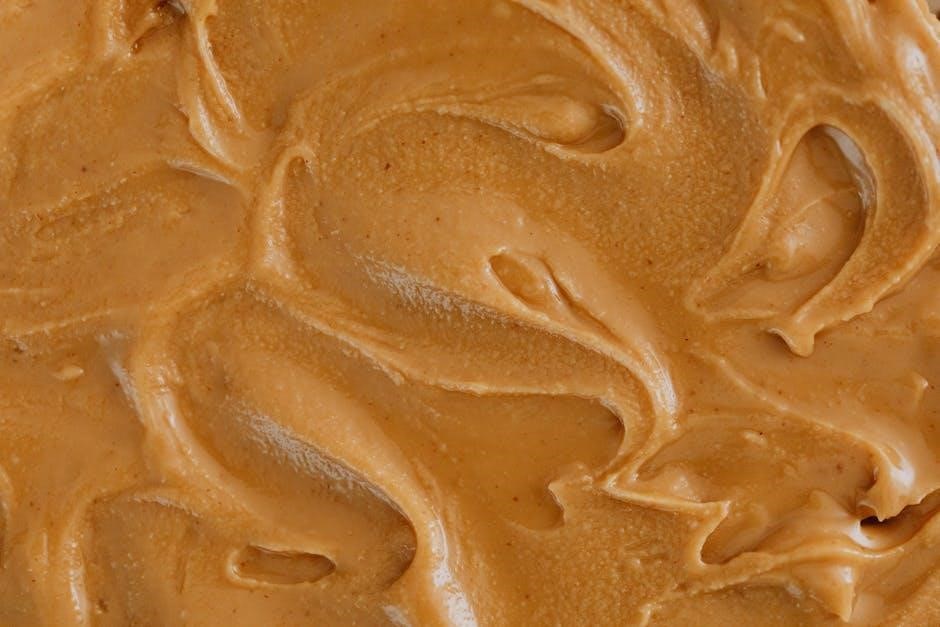Proper torque for lug nuts is crucial for safety, performance, and preventing damage. Specs vary by vehicle, so always consult your owner’s manual. Incorrect torque can lead to warped rotors or loose wheels, making regular checks essential to ensure optimal vehicle safety and function.
Importance of Proper Torque for Lug Nuts
Proper torque ensures safety, prevents damage, and maintains optimal vehicle performance. Over-tightening can warp rotors or damage studs, while under-tightening risks loose wheels. Incorrect torque may lead to uneven braking, reduced traction, or even wheel stud failure. Always follow manufacturer specifications to avoid costly repairs and ensure reliable operation. Regular checks are vital to maintain structural integrity and safety on the road.

Understanding Torque Specifications
Torque specifications are precise values set by manufacturers for tightening lug nuts. They vary by vehicle, ensuring safety and preventing damage. Always refer to your owner’s manual.
How to Find the Correct Torque Specs for Your Vehicle
Locate your vehicle’s owner’s manual, as torque specs are typically listed in the maintenance or specifications section. If unavailable, check for a tire information placard on the driver’s side door or inside the fuel cap. For missing manuals, visit the manufacturer’s website or contact local auto parts stores like AutoZone or O’Reilly for assistance. Online forums and communities may also provide reliable torque specifications for your specific vehicle make and model. Always verify the source to ensure accuracy and safety.
Common Torque Values for Different Lug Nut Sizes
Typical torque values for lug nuts range from 70 to 140 ft-lbs, depending on size and application. A 7/16″ lug nut often requires 80-90 ft-lbs, while a 1/2″ lug nut may need 90-110 ft-lbs. Larger sizes, such as 9/16″ or 5/8″, typically range from 120 to 140 ft-lbs. Always consult your vehicle’s specifications, as these values can vary by make, model, and wheel type. Using the correct torque ensures safety and prevents damage to studs or wheels.

Tools Needed for Torqueing Lug Nuts
A torque wrench is essential for precise lug nut tightening. An impact wrench aids in loosening, and a socket set provides the necessary sizes. Ensure accuracy and safety with these tools.
Best Torque Wrenches for Lug Nut Applications
A click-type torque wrench is ideal for precise lug nut tightening, offering clear feedback when the set torque is reached. Beam-type wrenches are durable and easy to read, suitable for heavy-duty use. Avoid impact wrenches for final torque application, as they can over-tighten. Ensure the wrench is calibrated and compatible with your vehicle’s specifications. Starting hardware manually before using a wrench is recommended for even distribution and to prevent stripping. Always refer to your vehicle’s manual for specific tool recommendations.
Impact Wrench vs. Torque Wrench: Pros and Cons
An impact wrench offers high torque and speed, ideal for loosening stubborn lug nuts, but lacks precision for final tightening. A torque wrench provides accurate control, ensuring lug nuts are tightened to exact specs, but is slower and requires manual effort. Impact wrenches are best for initial loosening, while torque wrenches are essential for precise final torque application to avoid over-tightening and potential damage. Using both tools in sequence ensures safety and accuracy.

Step-by-Step Guide to Torqueing Lug Nuts
- Loosen lug nuts with an impact wrench, then tighten sequentially using a torque wrench.
- Apply initial snug tightening by hand, ensuring even pressure.
- Use a star pattern for final torque to ensure uniform clamping force.
- Verify torque settings with a secondary check after driving.
Initial Tightening and Final Torque Application
Start by hand-tightening all lug nuts to ensure even contact. Next, use a torque wrench to snug them in a star pattern, applying about half the recommended torque. Finally, tighten each lug nut to the specified value in a sequence, ensuring not to exceed the manufacturer’s guidelines. This method prevents wheel damage and guarantees even pressure distribution. Always refer to your vehicle’s manual for precise torque specifications to avoid over-tightening, which can warp rotors or strip threads.
Using a Star Pattern for Even Tightening
To ensure even tightening, always use a star pattern when torquing lug nuts. Start with one lug nut, then move to the next in a circular sequence, alternating until all are snug. This prevents uneven pressure that could warp the rotor or brake components. After snug-tightening all nuts, apply the final torque in the same pattern. This ensures even stress distribution and prevents damage. Always refer to your vehicle’s manual for specific torque values and follow the recommended sequence.
Verifying Torque with a Secondary Check
A secondary torque check ensures accuracy and safety. After initial tightening, drive the vehicle for about 50 miles to allow components to settle. Then, recheck each lug nut using a torque wrench in a star pattern. This confirms that no nuts have loosened or become over-torqued. Repeat this process as recommended by your vehicle’s manual, especially after wheel changes or long trips. Proper verification prevents potential issues like loose wheels or warped rotors, ensuring optimal vehicle performance and safety.

Common Mistakes to Avoid
Common mistakes include over-tightening, which can warp rotors, and using the wrong tools. Always use a torque wrench and avoid uneven tightening to prevent wheel damage.
Over-Tightening and Its Consequences
Over-tightening lug nuts can lead to warped brake rotors, stripped threads, or damaged wheel studs. Using a torque wrench is essential to avoid exceeding the recommended specs. Impact wrenches often apply too much force, risking damage. Always refer to your vehicle’s manual for precise torque values. Over-tightening can also cause uneven stress on wheels and brakes, leading to safety hazards. Proper torque ensures even pressure and prevents costly repairs. Never use lubricants, as they can cause over-tightening and compromise safety.
Using Lubricants on Lug Nuts: Why It’s Not Recommended
Using lubricants on lug nuts is not recommended because torque specifications are designed for clean, dry threads. Lubricants reduce friction, leading to inaccurate torque readings and potential over-tightening. This can cause damage to wheel studs, brake rotors, or other components. Additionally, lubricants may compromise the integrity of the lug nut’s grip, potentially leading to loosening over time. Always follow the manufacturer’s guidelines and use dry, clean threads for safe and accurate torque application.

Checking Torque After Driving
Re-torque lug nuts after 50 miles to ensure even settling and prevent loosening. This step ensures long-term safety and optimal wheel performance over time.
Why Lug Nuts Need to Be Re-Torqued After Initial Miles
Lug nuts must be re-torqued after the initial miles to ensure proper seating and even stress distribution. During the first drive, components like wheels and brake rotors settle, which can cause slight loosening. Re-torquing prevents this and avoids potential damage from over- or under-tightening. It’s crucial to follow the manufacturer’s specifications to maintain safety and optimal vehicle performance. Regular checks ensure wheels remain secure, reducing the risk of costly repairs and ensuring reliable braking function.

Selecting the Right Lug Nuts for Your Vehicle
Choosing the correct lug nuts involves matching size, type, and thread pattern to your wheels. Proper fit ensures safety and prevents damage to studs or wheels. Always use Grade 12.9 for durability, as lower grades can fail under stress. Improper lug nuts can lead to loosening or stripping, compromising vehicle safety. Consult your vehicle’s manual or manufacturer for precise specifications to avoid costly repairs and ensure optimal performance.
Matching Lug Nut Size and Type to Your Wheels
Correct lug nut size and type are essential for proper fitment and safety. Ensure lug nuts match your wheel’s bolt pattern and seat type (conical or spherical). Common sizes include M12, M14, and M16, with torque specs varying accordingly (e.g., M12: 70-100 ft-lbs, M14: 110-140 ft-lbs). Using mismatched lug nuts can cause damage or loosening. Always refer to your vehicle’s manual or manufacturer for precise specifications to avoid costly repairs and ensure optimal performance and safety.

Regular Maintenance and Inspection
Regularly inspecting and re-torquing lug nuts is vital for safety. Check torque every 6,000 miles or as specified to ensure wheels remain securely fastened and functional.
How Often to Check Lug Nut Torque
Regular inspections are essential for maintaining wheel safety and performance. Check torque after the initial 50 miles and then every 6,000 to 8,000 miles. Additionally, inspect lug nuts after wheel replacements, tire rotations, or any brake repairs. Proper torque ensures even stress distribution, preventing wheel damage or brake issues. Always refer to your vehicle’s manual for specific recommendations, as mileage and driving conditions may require more frequent checks. Consistent monitoring guarantees optimal safety and reliability on the road.

Troubleshooting Common Issues
Identify warped rotors or loose wheels due to incorrect torque. Re-torque lug nuts after initial miles and avoid over-tightening to prevent damage. Always follow torque specs for reliability.
Identifying and Fixing Warped Rotors Due to Incorrect Torque
If your brakes pulsate or vibrate, it may indicate warped rotors from over-tightening lug nuts. Inspect the rotors for uneven surfaces and re-torque lug nuts to the correct specs. Light warping can sometimes be fixed by resurfacing, but severe damage may require replacement. Always use a torque wrench and avoid lubricants to prevent over-tightening. Regular checks and proper torque application are essential to maintain brake performance and safety.



